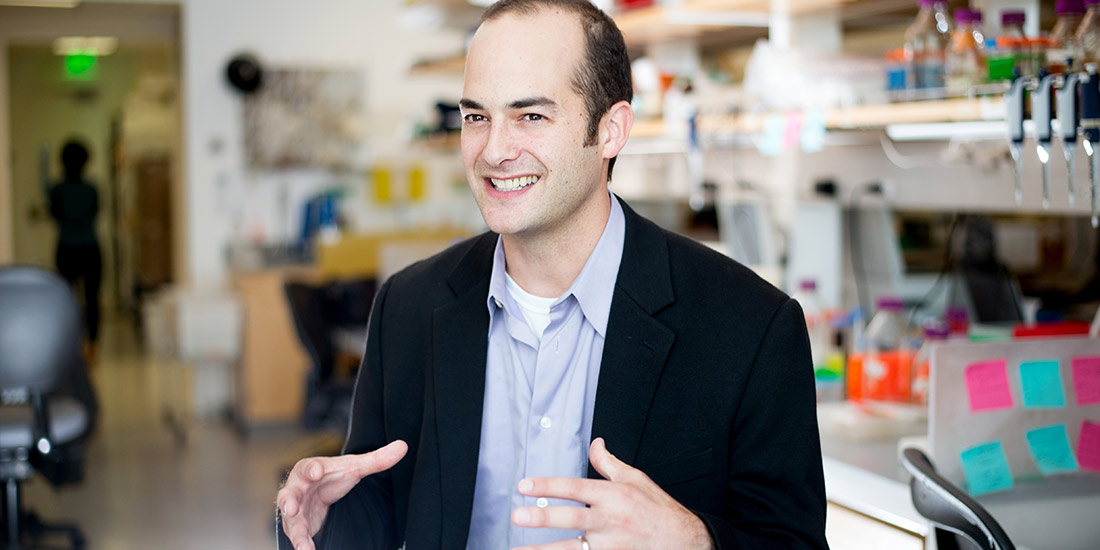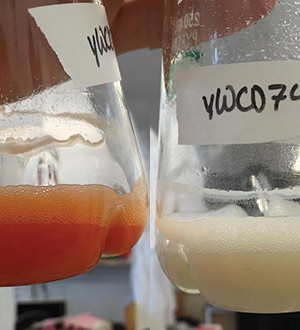
Q+A on homebrewed drugs with John Dueber
Morphine comes from Papaver somniferum, the opium poppy — but one day soon it might be grown in a lab. In 2015, bioengineering professor John Dueber and students engineered a yeast strain to convert glucose into reticuline, a key compound in the plant. Soon other researchers demonstrated subsequent steps toward developing thebaine, an opiate closely related to codeine and morphine, from yeast. The breakthrough holds both great promise and great risk, Dueber says.
“The ability to easily synthesize powerful drugs from glucose through fermentation could be dangerous in the wrong hands. But this pathway also has the potential to lead to more effective, less addictive painkillers, as well as new miracle molecules for treating cancer, hypertension and more.”

Yeast cells (left beaker) generate the beet pigment betaxanthin, which researchers use to identify key enzymes in the production of benzylisoquinoline alkaloids, the metabolites in the poppy plant that could lead to producing morphine, antibiotics and other pharmaceuticals. (Photos by William DeLoache)
At what point in your research did you begin to really think about the implications?
We started to think that we should contact policy experts when we reached the point where all but one step had been functionally expressed in yeast — albeit in pieces, not all together. We originally thought the field was probably 10 years away from being able to put all the pieces together to go from glucose to morphine. Then our project moved much faster than expected, and other labs made numerous advances as well, and it became apparent that we weren’t looking at a decade, but as little as one year.
What remains to be done?
To date, researchers have only shown one strain converting glucose into thebaine, and then a separate strain that you can feed thebaine to and convert that to morphine, but it hasn’t been shown where you put all of the enzymes into one single strain so that the strain converts glucose into morphine. But really, the limitation is how much you are producing. The strain for converting glucose into thebaine makes 7 micrograms per liter — and a typical morphine pill is approximately 10 milligrams. So we have time to develop policies to balance encouraging valuable research while limiting the risks of illicit use.
How significant is the risk inherent in this line of research?
There is a very real threat, I believe, with the potential for making a strain that can produce upwards of 10 milligrams per liter of morphine. Once such a strain is made, I think it’s really important for that strain to be kept in a lab and not released outside the lab. Because from that point on, a homebrew scenario is feasible. Not that much expertise would be required to make a beer brew with physiologically relevant doses of morphine.
Where do you go from here in your pursuit of bioactive molecules?
First, finding genes from plants themselves that produce these interesting reactions, then implementing those genes to find as many of the 2,500 natural products as possible. Then, testing those for desirable activities, like antibiotic and anti-cancer activities. Synthetic biology also plays a role to further expand beyond those 2,500 natural products, by introducing enzymes that may not have been naturally expressed in the plants.

